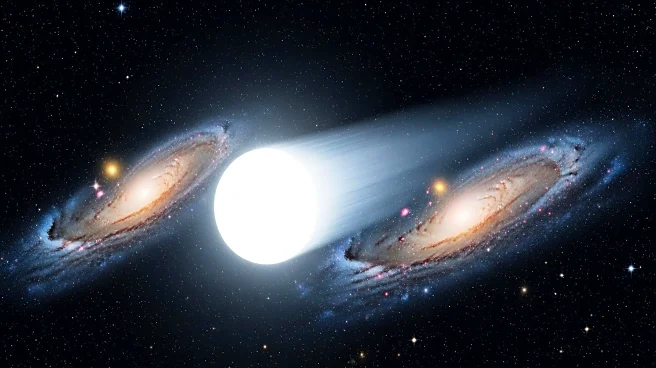What's Happening?
Astronomers have potentially solved the mystery of hypervelocity white dwarfs, which are remnants of stars that travel at extraordinary speeds through the Milky Way. Using computer simulations, researchers led by Hila Glanz at the Technion-Israel Institute of Technology modeled the merger of two white dwarfs in a binary system. The simulation showed that the lighter star is pulled inward and shredded by its heavier partner, leading to a double detonation that propels the remnants at high speeds. This process explains both the extreme velocities and the unusual physical characteristics of these white dwarfs.
Why It's Important?
Understanding hypervelocity white dwarfs is crucial for comprehending stellar dynamics and the origins of Type Ia supernovae, which are used as standard candles for measuring cosmic distances. The study suggests that these white dwarfs may result from diverse stellar interactions and explosions, including faint supernovae triggered by double detonations. This insight could refine models of stellar evolution and contribute to our knowledge of the elements essential for life, such as iron.
What's Next?
Future sky surveys, like those by the Vera C. Rubin Observatory, may help test these theories by observing such mergers and explosions in real time. Confirming the violent processes that propel these stellar remnants could further illuminate the mechanisms behind hypervelocity white dwarfs and their role in the galaxy.

